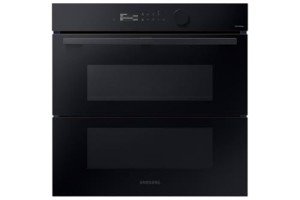11 Strategies To Refresh Your Self Cleaning Oven Reviews

Self-Cleaning Oven Reviews: A Comprehensive Guide for Modern Kitchens
In the ever-evolving landscape of kitchen technology, self-cleaning ovens have actually become an innovative device, promising convenience and efficiency for home cooks and hectic households alike. This short article delves into various models, features, advantages, and factors to consider for purchasing a self-cleaning oven. Furthermore, at the end of this short article, an area will respond to frequently asked concerns to offer more clearness for prospective buyers.
What is a Self-Cleaning Oven?
A self-cleaning oven is a home appliance geared up with an automatic cleaning function that utilizes heats or specialized cleaners to get rid of baked-on food and grease. This gets rid of the requirement for extreme chemical cleaners and reduces the time spent scrubbing.
Various Types of Self-Cleaning Technologies
Pyrolytic Cleaning
- This method involves heating up the oven to very high temperature levels (around 900 ° F or 500 ° C) to incinerate food residues into ash, which can be easily wiped away.
Steam Cleaning
- This technique makes use of steam to loosen gunk. It involves a lower temperature operation than pyrolytic cleaning, typically making it a gentler option for the oven.
Soak Cleaning
- Some ovens utilize a soak cleaning technique where certain cleaning functions enable the application of cleaners followed by a soak duration to break down tough spots.
Key Features to Look for in a Self-Cleaning Oven
When looking for a self-cleaning oven, customers should consider several features:
- Cleaning Cycle Duration: The length of self-cleaning cycles can differ; generally, pyrolytic cycles last about 3 to 6 hours, while steam cleaning cycles can take about 30 to 90 minutes.
- Control Type: Choose between manual knobs or digital panels for ease of use and features like postponed start.
- Safety Features: Look for added safety features such as door locks during the cleaning cycle to avoid accidental openings.
- Oven Type: Decide if you choose a wall oven, variety, or a double oven configuration, which can offer extra cooking area.
- Energy Efficiency: Check for energy scores to ensure you are choosing an ecologically friendly choice.
Below is a comparison of some popular self-cleaning oven models offered in the market:
| Brand & & Model | Cleaning Method | Oven Capacity | Cost | Key Features |
|---|---|---|---|---|
| GE Profile PTSI9100SNSS | Steam Cleaning | 30" | ₤ 1,899 | Wi-Fi connection, True European convection |
| Whirlpool WOS51EC0HS | Pyrolytic | 30" | ₤ 1,499 | Sensing unit cooking, self-cleaning cycle options |
| Samsung NV51K6570SS | Pyrolytic | 30" | ₤ 1,799 | Double convection, clever control |
| Frigidaire FGEF3036RF | Pyrolytic | 30" | ₤ 1,399 | Much easier to clean enamel, air fry function |
| KitchenAid KODE900ESS | Pyrolytic | 30" | ₤ 2,299 | Even-Heat technology, gliding oven racks |
Benefits of Self-Cleaning Ovens
Self-cleaning ovens provide multiple benefits:
- Time-Saving: The self-cleaning feature conserves users hours invested scrubbing and scraping.
- Less Harsh Chemicals: These ovens require minimal or no chemical cleaning representatives, making it safer for the family and the environment.
- Enhanced Hygiene: Regular cleaning assists keep a hygienic cooking environment, removing leftover food particles that can end up being reproducing premises for germs.
- Efficiency: High-temperature cleaning ensures a thorough cleaning, typically outperforming manual cleaning efforts.
Drawbacks of Self-Cleaning Ovens
While self-cleaning ovens boast various benefits, they are not without downsides:
- Energy Consumption: The high-temperature cleaning cycles can cause substantial energy usage.
- Heat Emission: The process can warm up the cooking area, which might not be ideal in warmer months.
- Long Wait Times: The cleaning cycle can take numerous hours, and the oven remains locked till it cools off, delaying cooking strategies.
- Preliminary Cost: Self-cleaning ovens normally come at a higher price point than basic ovens.
Regularly Asked Questions (FAQs)
1. Are self-cleaning ovens safe to use?
Yes, self-cleaning ovens are developed with precaution, such as door locks during the cleaning process to prevent mishaps. Nevertheless, they might release smoke or smells, so appropriate ventilation is advised.
2. How typically should I use the self-cleaning feature?
It is typically recommended to make use of the self-cleaning function every few months, depending upon use. More frequent usage may be required for heavy-duty cooks.
3. Can you by hand clean up a self-cleaning oven?
Yes, you can manually clean a self-cleaning oven utilizing standard cleaning methods; nevertheless, this beats the function of the self-cleaning function.
4. Is there a distinction in cleaning effectiveness between steam and pyrolytic cleaning?
Both techniques are reliable, however pyrolytic cleaning is normally more comprehensive, as it incinerates food residues at a heat, while steam cleaning loosens up grime for easier wipe-down.
5. Do Self Cleaning Oven Care -cleaning ovens utilize more electrical energy?
Yes, due to the high temperature levels needed for self-cleaning cycles, these ovens can consume more electrical power compared to routine cooking.
In summary, self-cleaning ovens use significant benefits, consisting of convenience, efficiency, and improved hygiene in the kitchen. However, prospective buyers need to weigh the advantages versus the downsides, such as energy consumption and higher in advance costs. With numerous options offered in the market today, those considering a self-cleaning oven have many models tailored to fit different cooking requirements and budgets. As technology continues to advance, these ingenious appliances will likely grow in popularity, making kitchen maintenance simpler than ever.

